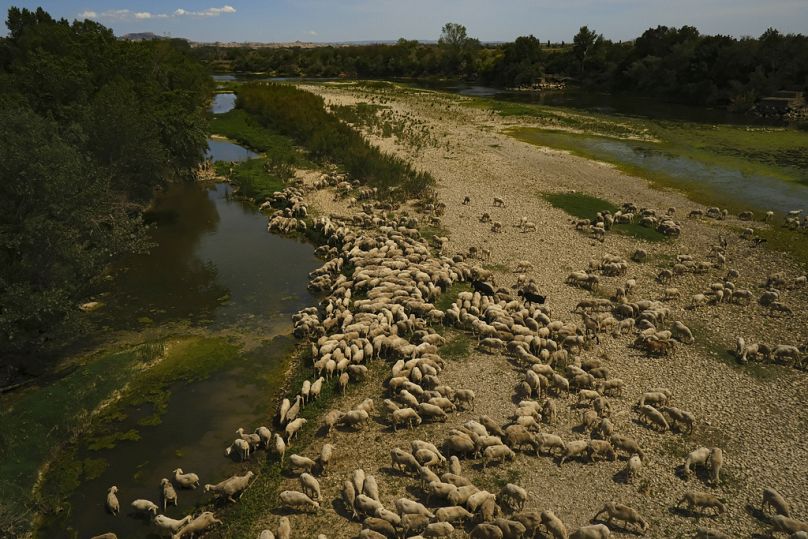Heat extremes are likely to become more frequent and more intense across the region, a WMO report warns.
Europe is the fastest warming continent in the world, according to the World Meteorological Organization (WMO) and the European Copernicus network.
The continent has been warming twice as much as the global average since the 1980s, the two organisations show in their joint annual State of the Climate report, released on Monday 19 June.
In 2022, Europe was approximately 2.3°C warmer than it was at the end of the 19th century.
Warming has soared since the 1990s, breaking temperature records on several occasions.
Some areas have seen more extreme changes than others, with temperatures around 2°C above average in much of Western Europe and even exceeding 3.5°C in regions close to the Arctic.
Are Europe's record-breaking heatwaves here to stay?
The summer of 2022 was the hottest on record in many European countries.
According to the report, extreme weather-related eventsclaimed more than 16,000 lives and directly affected 156,000 people. Flooding and storms were the most economically damaging, while heatwaves were the most deadly.
Belgium, France, Germany, Ireland, Italy, Luxembourg, Portugal, Spain, Switzerland and the UK were among the countries that broke temperature records.
“The record-breaking heat stress that Europeans experienced in 2022 was one of the main drivers of weather-related excess deaths in Europe," says Dr Carlo Buontempo, Director of Copernicus Climate Change Service.
"Unfortunately, this cannot be considered a one-off occurrence or an oddity of the climate," he continues, adding that heat stress extremes are likely to become more frequent and more intense across the region.
Sea surface temperatures around Europe also reached new highs, accompanied by marine heatwaves.
Surface ocean warming soared to more than three times the global average in the eastern Mediterranean Sea, the Baltic and Black Seas, and the southern Arctic. This led to species migration, mass extinctions and the arrival of invasive species that disrupt delicate marine ecosystems.
Glacier melt was unprecedented, with 880 km3 of ice lost in Europe from 1997 to 2022. The Alps were worst affected, with an average reduction in ice thickness of 34 metres and record-breaking loss in 2022.
How can Europe combat warming temperatures?
The report says renewable energy generated more electricity than polluting fossil fuels for the first time last year - "a sign of hope for the future".
Wind and solar power generated 22.3 per cent of EU electricity in 2022, overtaking fossil gas (20 per cent).
"Increasing use of renewables and low-carbon energy sources is crucial to reduce dependence on fossil fuels,” says WMO Secretary-General Professor Petteri Taalas.
As extreme weather threatens to impact the supply and demand of energy in Europe, Taalas emphasises the importance of services like WMO in ensuring the resilience of energy systems against climate-related shocks and improving energy efficiency.
The report indicates that the south of Europe holds the most potential for solar power, while wind power works best over the ocean - in particular, off the coast of Ireland and Portugal and the Aegean Sea.



















